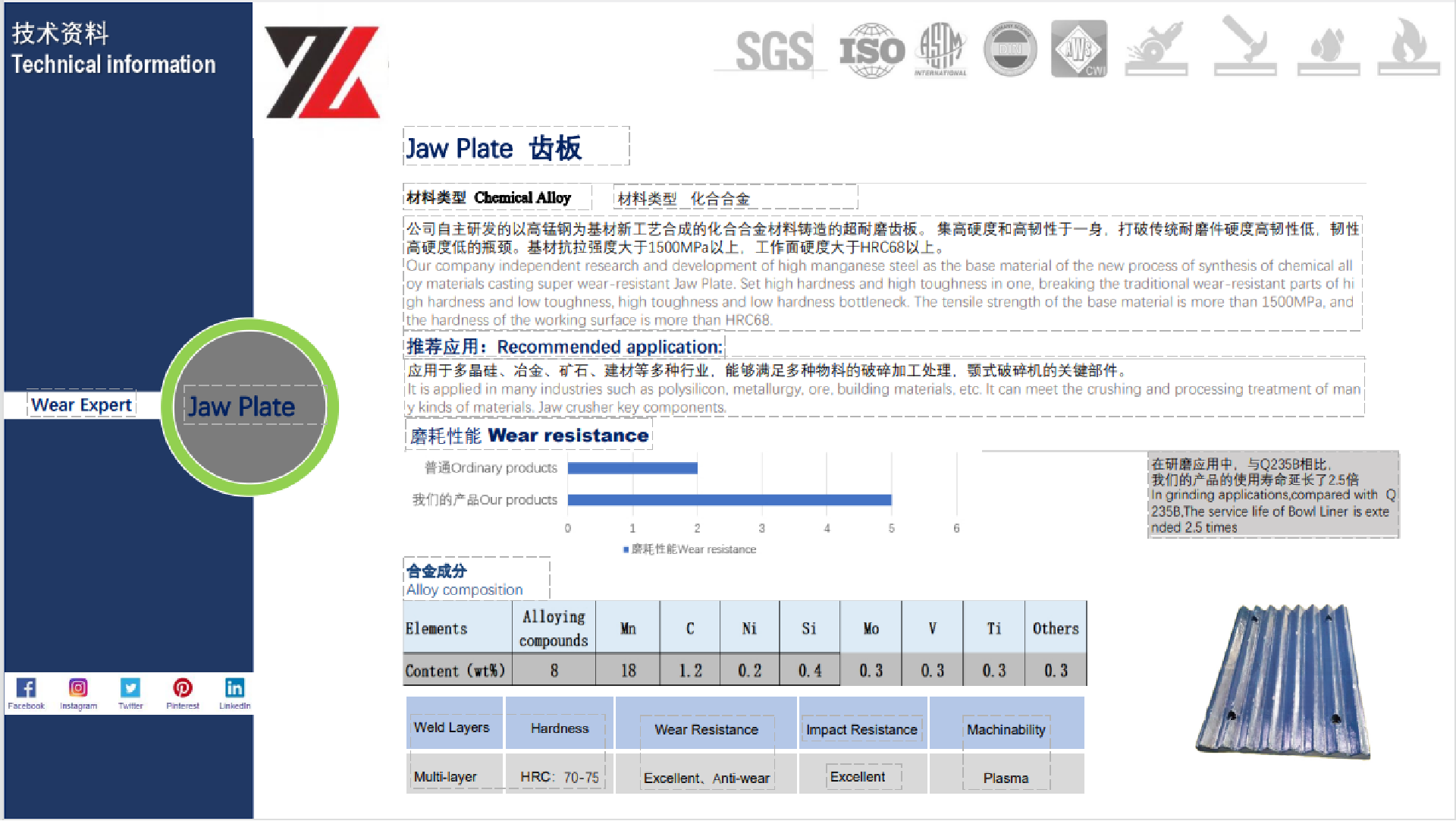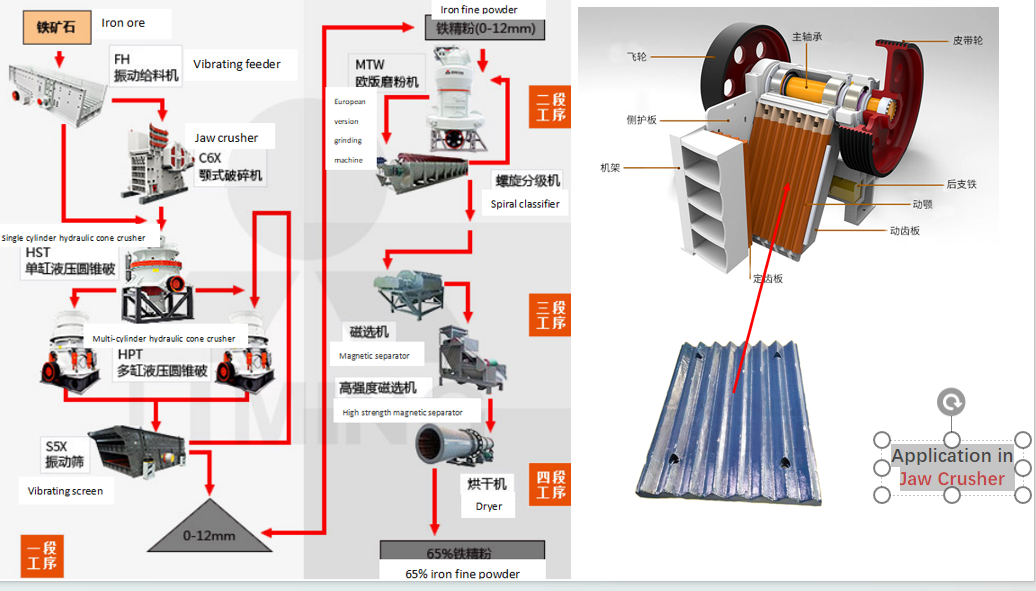
The jaw crusher tooth plate is the main working component of the jaw crusher, which is divided into movable tooth plate and fixed tooth plate. The crushing chamber is composed of movable tooth plate and fixed tooth plate to crush materials. When designing, the broken tooth plates of the moving and fixed jaws should have their peaks aligned with their valleys. In this way, besides squeezing, there is also a bending effect on the material during crushing, making it easier for the material to break. When selecting materials, in order to improve the service life of the toothed plate, manganese steel containing more than 12% manganese is used, and the commonly used one is ZGMn13.
Process Introduction
1. Pretreatment stage
The ore is first pretreated to remove large impurities and unbreakable materials in preparation for subsequent crushing and grading.
2. Grinding stage
The pretreated ore enters the grinding mill and is ground to a particle size of -12mm by mechanical force. This step is the key to ensure that the ore particle size meets the requirements of subsequent processes.
3. Grading and crushing stage
The ground ore enters the FLS classifier, where ore particles of different sizes are separated by screening and grading.
Next, the ore enters the HST single-cylinder hydraulic cone crusher for further crushing, where the ore is crushed into smaller particles through the combined action of hydraulic and mechanical forces.
In this process, the "Jaw Plate" plays a key role in the jaw crusher. The jaw crusher uses the extrusion and shear force between the two jaw plates (moving jaw and static jaw) to crush the ore. Among them, the "Jaw Plate" is a key component of the moving jaw, and its material, shape and wear resistance directly affect the crushing effect and the service life of the machine.
4. Magnetic separation and screening stage
The crushed ore enters the GXS magnetic separator, where magnetic impurities are removed by magnetic separation to improve the purity of the iron ore concentrate.
Then, the ore is ground again by the MTW ball mill, and graded by spiral classifiers, screening machines, etc. to ensure that the particle size of the iron ore concentrate is more uniform.
5. Airflow classification and drying stage
Next, the iron ore concentrate enters the high-pressure pendulum airflow classifier (including the HPT multi-drum high-pressure pendulum airflow classifier) for airflow classification, and the particles of different sizes are further separated by the action of airflow.
The separated iron ore concentrate is deeply removed by a high-intensity magnetic separator, and then dried by a dryer and a drying machine to remove moisture and ensure the stability of the iron ore concentrate.
6. Grinding and finished product stage
The dried iron ore concentrate enters the grinding mill again for fine grinding until it reaches the 65% fineness requirement.
Finally, the iron ore concentrate (0-12mm) that has undergone a series of complex process treatments is used in various fields, such as steel smelting, building materials, etc.
7. Special instructions for jaw crusher
In the entire process, the jaw crusher is the primary crushing equipment, and its importance is self-evident. In particular, the "Jaw Plate" is one of the core components of the jaw crusher, and its performance directly affects the crushing effect and the operating cost of the machine. Therefore, when selecting and using a jaw crusher, special attention should be paid to the material, structural design, and maintenance of the "Jaw Plate".
